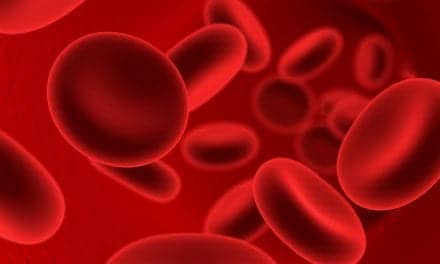Effective pulmonary function tests on their own, combining the diagnostic power of spirometry and plethysmography gives clinicians a frontline weapon in the management of chronic lung diseases like asthma and COPD.
By Phyllis Hanlon
When London surgeon John Hutchinson first introduced the spirometer in 1846, the device became widely used in laboratory settings to evaluate pulmonary conditions and prescribe appropriate intervention. In the ensuing years, spirometry has come into widespread use in clinical settings and, in some cases, the home. While spirometry alone has proven to be an important assessment tool, adding plethysmography could improve diagnostic capabilities and treatment options.
Essential but Underused
Before becoming director of education at the COPD Foundation, Scott Cerreta, BS, RRT, conducted a training program for the American Lung Association. During on-site visits, he found that, although the US Prevention Task Force recommended spirometry for COPD screening in 2011, fewer than 50% of physicians use spirometry in their practices.
Patients with COPD lose 50% of their lung function before getting that first spirometry test, said Cerreta, explaining that many doctors use peak flow meters, which takes 30 seconds, instead of spirometry, a longer process at 15 minutes. “[Spirometry] is an asymptomatic screener and could detect [disease],” he said. “It is pivotal to health, but spirometry is usually done for symptomatic people.”
Clinical spirometry equipment costs approximately $1500, but price is not typically the major hurdle, according to Cerreta. “The biggest barriers are time and energy to train staff. If you don’t get good quality results, the doctor loses confidence in the device. Also, it’s difficult to squeeze [spirometry] into a regular office visit. It takes 15 to 20 minutes to do the test and breaks the clinical flow of the office,” he said. “If doctors refer patients for spirometry to a lab, the appointment is typically 30 days later. By then, the patient feels better and breaks the appointment.”
Rather, spirometry should be a part of regular practice. “Doctors could offer it once or twice a week at a designated day and time and bring the patient back to the same office 2 or 3 days after an office visit. The best [primary care physician] centers follow that model.”
Cerreta noted that while spirometry doesn’t identify the type and location of lung disease, it tracks a patient’s forced vital capacity (FVC) and forced expiratory capacity (FEV1), important measures that can identify inactive or active disease. “We miss the opportunity to do intervention or early management of the person [by not using spirometry],” he said. He also suggested that adding high resolution computed tomography (CT) could provide a more complete picture for treatment decisions and become the wave of the future.
In-home Spirometry
While respiratory professionals encourage more in-office spirometry, the practice is making its way into a home setting. The Morristown Medical Center (MMC), Atlantic Health System, a Cystic Fibrosis Foundation-accredited care center in New Jersey, became one of the first cystic fibrosis (CF) centers in the country to incorporate home spirometry following participation in a study, according to Michael Cantine, BSAST, RRT, CPFT, AE-C.
In 2011-2012, MMC’s Adult Cystic Fibrosis Center was one of 13 centers to participate in the Adult Quality Improvement (AQI) program in which patients were given a PIKO 6 home spirometer from nSpire Health Inc. The program, “Step Up to Better Breathing” (SUBB), included 44 patients who assessed exacerbation level, measured cystic fibrosis quality of life score (CFQ-R) and determined their FEV1 values at the beginning of the study. Upon completion, the results were overwhelmingly positive. A majority of subjects (87%) had a better understanding of their disease and 79% planned to continue using the home spirometer.
Post-study, the CF center encouraged the practice of home spirometry, putting the patient in the driver’s seat. “The patient is an integral part of the team. They are proactive about their own health,” Cantine said. In the home setting, patients perform spirometry a couple of times daily to ensure they have good tight tolerance.
“When they come to the Center, approximately every 3 months, their home readings are compared to the in-hospital readings for quality assurance. Patients became more aware of lung function and better educated about pulmonary exacerbation, which enables them to more effectively self-manage their disease at home.”
Patients with CF are prone to accumulating thick, sticky secretions that can trigger infection, inflammation, mucus-plugging and diffuse bronchiectasis, leading to pulmonary exacerbation, lung function decline, and possible hospitalization. A team approach that uses spirometry can help reduce symptoms and exacerbations.
Worker and Public Health
An important tool in clinical and home settings, spirometry also plays a major role in monitoring workplace health. Lu-Ann Beeckman-Wagner, health scientist at the National Institute for Occupational Safety and Health (NIOSH), said, “In the occupational health setting, spirometry derives the same measures it does in a clinical location. But for workers exposed to potentially toxic chemicals and other airborne hazards, spirometry may provide the first indication that an individual is experiencing adverse lung health.”
If spirometry shows a restrictive problem, the occupational health clinicians may decide to send the patient to a pulmonary clinic for more extensive testing, she added.
Beeckman-Wagner pointed out that spirometry also offers key information related to public health. “Health surveillance programs are appropriate where testing has the potential to reduce morbidity or mortality in workers exposed to potentially hazardous substances. Early recognition of reductions in pulmonary function may allow intervention at a stage where physiological changes can be reversed and disease prevented,” she said.
“Clinical research involves studies to identify the most effective and most efficient interventions, treatments, and services for individuals with pulmonary diseases. Epidemiologic surveys examine the distribution of disease, the factors that affect health and how people make health-related decisions,” she added. Epidemiological research has explored the effect of air pollution on urban populations, the health of the American general population, and the most influential factors an individual considers when deciding to quit smoking.
“The Body Box”
When spirometry confirms obstruction (narrowing of the pipe) or restriction (stiffening of the lung), plethysmography, which looks at the predicted value of the flow volume loop, is the next logical step, said Patrick G. Burns, director of product management at MGC Diagnostics.
“A patient may appear to have restrictive disease, but the clinician will be sure by doing plethysmography,” Burns said, noting that, in some cases, a patient could have both restrictive and obstructive patterns. “Spirometry and plethysmography together would verify this. By knowing this you can maximize patient treatment. Plethysmography is used to confirm a restrictive component of lung disease—that spirometry can only suggest—and is likely one of the most important functions of body plethysmography. While gas dilution methods can measure the total lung capacity, body plethysmography is often considered to be more accurate and often more repeatable.”
Patrick Morgan, president, Morgan Scientific, noted that plethysmography is regarded as the “gold standard” for measuring intrathoracic gas volume and specific airway resistance. While a physician’s office would usually not have a plethysmograph due to the high cost (devices could run as much as $50,000) a pulmonary function testing lab typically uses both spirometry and plethysmography. “In combination, the two devices provide reliable clinical data regarding a patient’s respiratory status,” he said.
Plethysmography requires the patient to sit inside an airtight chamber, or “body box.” A spirometer inside the chamber measures the resistance loop and calculates the residual volume in the lungs after full expiration. Morgan pointed out that pulmonary function testing, whether with spirometry or plethysmography, is effort dependent.
“Unless you have a good coach, a technician who is almost a bully, you have to have good training from a technician or the values are pretty worthless,” he said. “Using plethysmography is not much more different than spirometry. It involves more coaching than actual use of equipment.” A good technician should be a patient advocate to get the best result out of the patient, he asserted.
Burns added that using the “body box” is relatively easy, as long as the clinician has knowledge of basic anatomy and physiology and how to get waveform measures. The most important quality for a successful plethysmograph reading though pertains to people skills.
“You have to be a little bit of a psychologist. You have to know how to handle patients and put them at ease,” Burns said. “Previous generation devices required the patient to breathe gas air, but the newer models are all glass and have a good intercom system. The patients can hear everything and it’s less claustrophobic. Patients should be able to move around inside. There’s also a way to handle IVs. You pass the IV line through the door during testing. This helps make testing easier.”
Designed for All Demographics
Today’s plethysmographs can be used for all patient populations from pediatric to geriatric. Burns reported that he worked at a cystic fibrosis clinic that would allow a 2 or 3-year-old child to play inside the box to become comfortable with the surroundings. “By the time the child is 5, you could get good tests,” he said. “With [seniors], they have to understand directions. If they are cognizant, they should do okay.”
The “body box” is also designed to accommodate any size patient. Burns noted that obese patients might demonstrate a significantly reduced FRC even while the coefficient of variation and TLC can be within normal limits. To obtain an accurate measure, the technician should have proper training and know how to relieve any associated stress with doing the test in an “enclosed box.”
In addition to providing adequate room for patients, a plethysmograph should be designed to fit in the physical space available. Burns pointed out that the MGC Diagnostics box has doors that open in a circular fashion. “You don’t have to have a bigger space. The box can be configured to go in a tight area,” he said.
Like other medical devices, plethysmography can send data electronically as long as the device is networked to the hospital EMR system. “If the hospital has the capability, the network can see all the graphs done in the lab and get all the numbers and data,” Burns said. Having this data allows the hospital and the manufacturer to trend the information. “Trending allows for optimal treatment. Periodic tests will see if the patient has stabilized or if treatment should be changed.”
Advanced Technology
Advanced plethysmography is easier to calibrate and offers far less waiting time than in the past, Burns noted. “New boxes equilibrate faster. You had to use a manometer in the past, which is more time consuming,” he said, citing Boyle’s Law (ie, the absolute pressure exerted by a given mass of an ideal gas is inversely proportional to the volume it occupies if the temperature and amount of gas remain unchanged within a closed system).
Additionally, calibration should be done on a daily basis for both the plethysmograph and the spirometer. “If not, you run the risk of obtaining an inaccurate measure. Most software will warn you that you haven’t done calibration,” said Burns, noting that the process takes less than a minute. As for hygiene, most pulmonary function labs use barrier filters to keep bacteria out, but the box should also be cleaned regularly. “This should be part of protocol,” said Burns.
Morgan added that a third tool, diffusion testing, can measure the ability of the lung to take up oxygen. The 3 key measures—spirometry, plethysmography and diffusion testing—can be an effective arsenal in evaluating and managing respiratory conditions, including chronic bronchitis, chronic obstructive pulmonary disease (COPD), cystic fibrosis, asthma, sarcoidosis and pneumoconiosis, he reported.
Industry Guidelines
The American Thoracic Society (ATS) has created a set of guidelines for conducting valid and usable PFTs. For example, a clinician administering spirometry should obtain 3 or more efforts, 2 of which are reproducible. “You might be in the lab for 5 or 6 efforts of blasting out. The computers will look at your efforts and check to see if they are meeting effort and reproducible criteria,” Morgan said.
Many hospitals are attempting to achieve ATS reproducible standards, although they are not mandatory. Monitoring the standards in private physician offices is more difficult; in some cases, standards may not be applied and staff may not be trained appropriately to administer the test, he noted.
According to Burns, the American Thoracic Society/European Respiratory Society (ATS/ERS) recommendation for functional residual capacity is 5%, and 10% for nitrogen washout and helium dilution. “Gas dilution techniques for measuring TLC are more difficult and time consuming to both wash out the lungs between tests and can be more difficult to obtain repeatable values. The ATS/ERS also suggests a waiting time of more than an hour for severely obstructed patients. This is not necessary with plethysmography and several repeatable efforts can be done in succession,” said Burns.
Cantine from MMC’s Adult CF Center noted that many machines on the market today are manufactured according to ATS recommendations. “They have the ATS standards built in and will tell you when the patient needs to blow harder. Anyone doing spirometry has to have awareness and judge [performance] to give the best possible values to the doctor,” he said.
Many respiratory illnesses will not be cured. But by doing pulmonary function testing that includes spirometry and plethysmography to identify disease process and determine appropriate treatments, symptoms can be minimized and quality of life maximized, according to Morgan. “It’s all about coping.”
RT
Phyllis Hanlon is a contributing writer to RT. For further information, contact [email protected].










